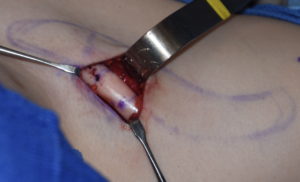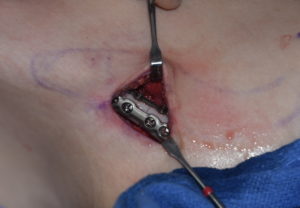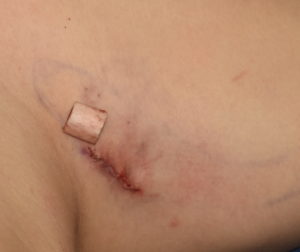Shoulder width reduction is done by shortening the length of the clavicle by removing a segment of bone on each side. This collapse of the bone is achieved by a procedure known as clavicular reduction. It involves removal of a segment of bone through spaced osteotomies and an intervening ostectomy. The medial and lateral segments of the clavicle are then put back together with plate and screw fixation. While this concept for shoulder width reduction is straightforward, making it an acceptable aesthetic operation is all about the details of its execution. In theory it shares the basic details of clavicle fracture repair, but there are significant differences.






Shoulder width reduction using clavicular reduction osteotomy techniques is both visibly and aesthetically effective with the described surgical technique.
Dr. Barry Eppley
Indianapolis, Indiana






